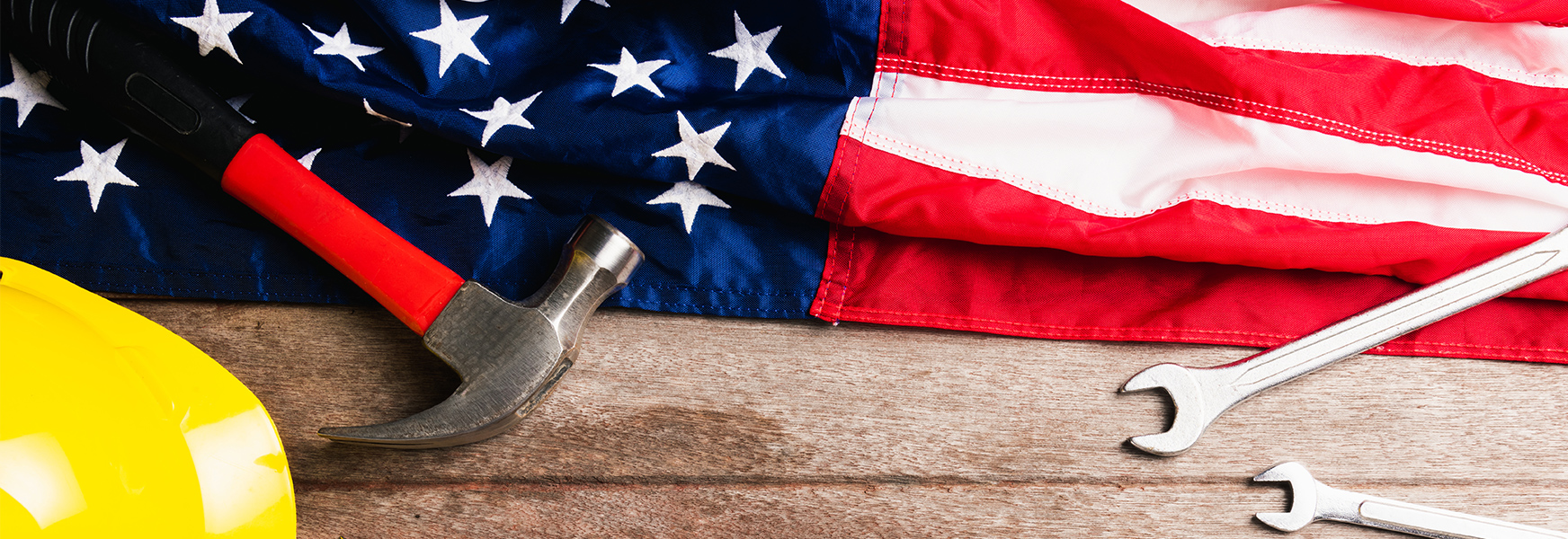Labor Day in America and how it became a federal holiday

As we celebrate Labor Day, gearing up for family and friends around the pool or the barbecue, have you ever thought about why Labor Day started? Today, many Americans enjoy a paid holiday on Labor Day, but back on September 5, 1882, the first time Labor Day was celebrated, it was very different.
Championed by Peter J. McGuire of the Carpenters' Union and Mathew McGuire of the Machinists' Union, 10,000 workers took unpaid time off to march from City Hall to Union Square in New York City as a demonstration against the working conditions of the day. The typical workday was 12 hours long, six or seven days a week, with weekly wages ranging from $0.55 to $1.20 throughout the mid to late 1800s. Yes, that’s weekly – not hourly. Adjusted for inflation, that amounts to about $36 a week today. In short: long hours working in hazardous conditions for wages that couldn’t support a family.
Our industrial history is chock full of accidents rendering tens or hundreds of fatalities per incident. On December 6, 1907, in Monongah, West Virginia, an underground mine explosion killed 362 of the 380 men and boys working that day. On January 10, 1860, in Lawrence, Massachusetts, the Pemberton Mill factory collapsed without warning, killing 145 workers and injuring 166.
One of the most infamous incidents, which helped organize labor and start creating reform around safety and building codes, was the Triangle Shirtwaist fire. On March 25, 1911, a Saturday afternoon in New York City, 600 workers, mostly young women, were working when a fire began in a rag bin on the 8th floor. Workers attempted to put out the fire but found rotted hoses and rusty valves. The fire could not be suppressed and quickly spread. The elevator broke down after only four trips. Exits were locked to prevent unauthorized breaks and firefighting ladders could reach only seven floors. The only way to escape being suffocated or burned alive was to jump.
“Within 18 minutes, it was all over. Forty-nine workers had burned to death or been suffocated by smoke, 36 were dead in the elevator shaft and 58 died from jumping to the sidewalks. With two more dying later from their injuries, a total of 146 people were killed by the fire.” -- History.com
In the industrial revolution of the late 1800s and early 1900s, if you went to work, there was a significant chance you wouldn't make it home. Pennsylvania’s Allegheny County published a “Death Calendar in Industry” that placed a red “x” for each person who died in the county each day from July, 1906 to June, 1907. Fewer than 70 days lacked an “x,” and 526 workers died that year in a single county. If you did make it home, you would likely be nursing wounds, fractured bones, amputations, or worse.
The photography of Lewis Hine provides a glimpse of the working men, women, girls, and boys and the working conditions they faced. Hine, an investigative photographer for the National Child Labor Committee, traveled the country photographing the working conditions of children in all industries including children in coal mines, in meatpacking houses, textile mills, and canneries. Often, he tricked his way into factories to get past managers who did not want the public scrutiny. Check out his compelling work in the National Archives.
While today's workplaces aren't free from hazards, injuries, or fatalities, we have come a long way. But how we got here was hard won, sometimes resulting in violence. Consider the Haymarket Riot of 1886, when police clashed with labor protesters in Chicago, or the Pullman strike in May, 1894 that pitted railroad workers fighting for safer conditions and better schedules against federal troops and an army of private detectives.
While most of us celebrate Labor Day the first Monday of September with a day off from work, it's easy to forget the history of Labor Day is filled with struggle, courage, defiance, injuries, and death.
Take a moment to remember how we got the eight-hour workday, overtime pay, machine guards, air quality monitoring, respirators, Lock Out/Tag Out procedures, fall protection equipment, workers’ compensation insurance, and the standards that provide us all a safe and healthful workplace. And don’t forget the thousands of workers in retail, hospitality, food service, emergency services and healthcare who work on Labor Day. To you, we offer a big “thank you.”
So, this Labor Day, remember it is not just a holiday from work, it's a holiday about work. Without the lives and limbs of the workers who came before us, and the unions and officials that spoke out, there's a good chance more of us would be spending this first Monday of September in a hospital – or, worse yet, a morgue.
For a more in-depth discussion of Labor Day origins and the working conditions of the industrial revolution, check out the latest MEMIC Safety Experts podcast- How Workplace Safety Influenced Labor Day- Celebrating the American Worker.

